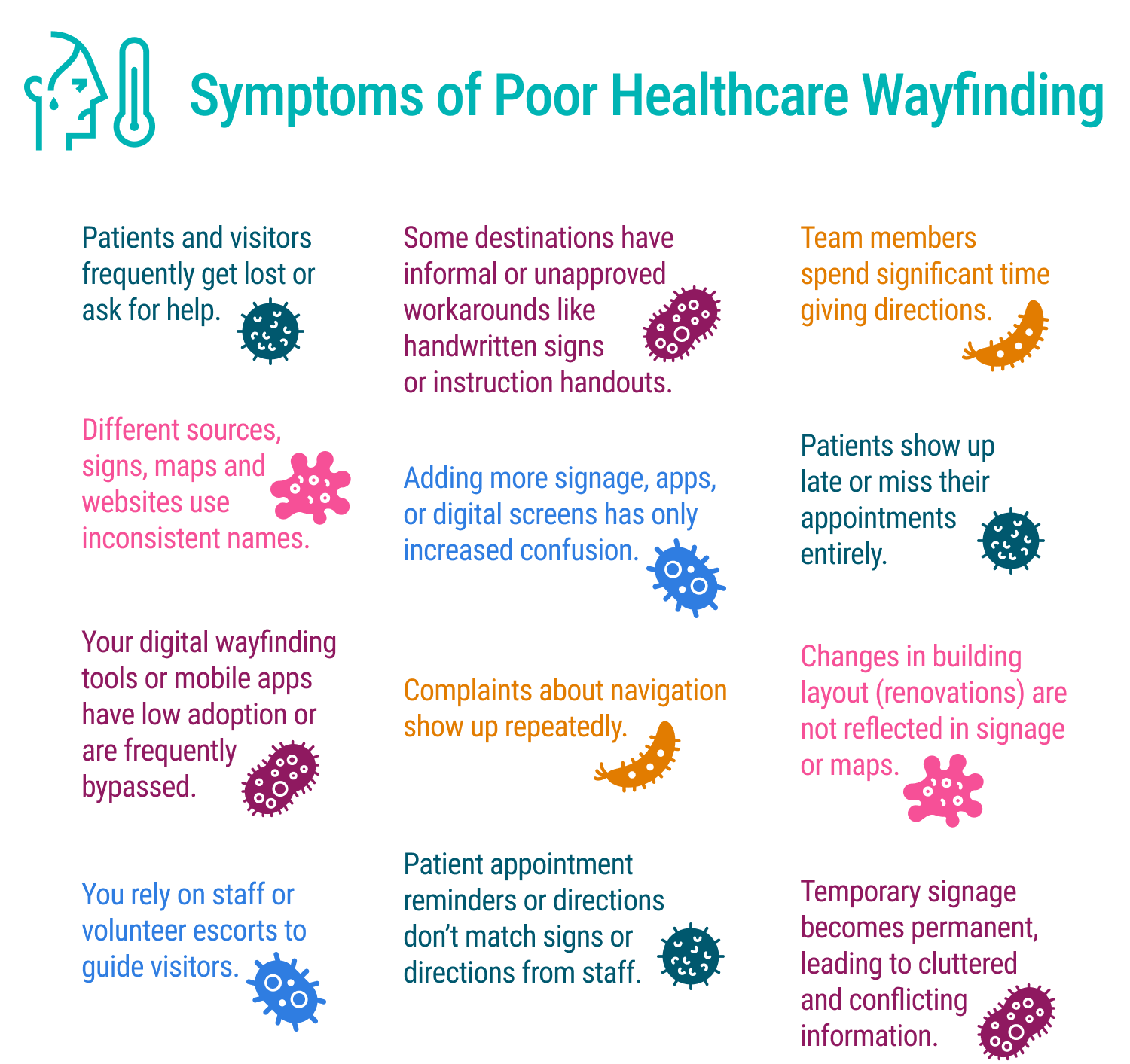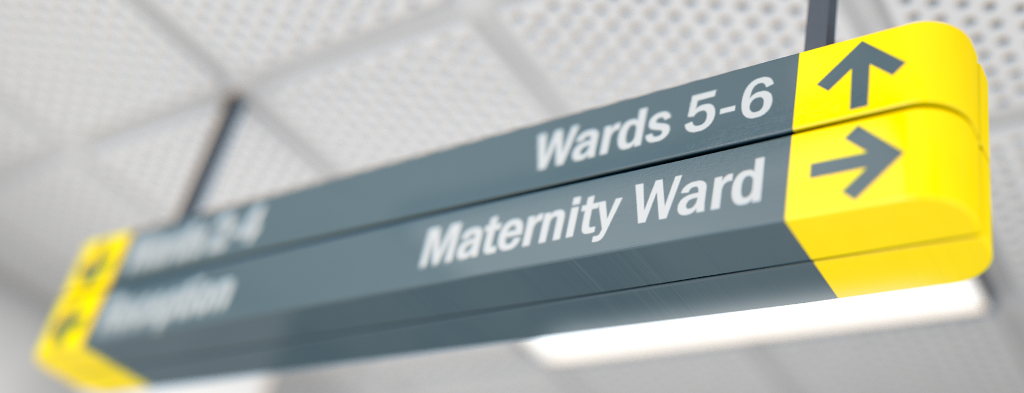Imagine arriving at a hospital, anxious and disoriented, only to realize you have no idea where to go. For too many patients and visitors, that’s their first physical interaction with your brand. And it could be marked by confusion and frustration.
In this blog, you’ll learn how healthcare marketers can diagnose and resolve wayfinding challenges, especially during a rebrand, to ensure every visitor experiences confidence, clarity, and care from the moment they arrive.
Why Wayfinding Is a Brand Experience
If you’re a marketing leader in healthcare, remember this: Most people will encounter your brand in a moment of vulnerability.
Whether they’re navigating a medical emergency, visiting a loved one, or attending a routine appointment, visitors arrive in a heightened emotional state. You may not be able to change how they feel. What you can do is reduce their stress and create a more positive impression of your brand.
The first step? Make sure they can find where they’re going. Easily.
A thoughtful wayfinding strategy does more than guide someone from Point A to Point B. It conveys empathy. It eases tension. And when done well, it reflects the strength of your brand.

If it’s been a while, now’s the time.
Walk a Mile in Their Shoes
Before you can fix your wayfinding challenges, you need to understand where, and why, they’re happening.
Start by looking for across your facilities:

Listen to the front line
The best insights often come from the people closest to your patients: your frontline staff.
Talk to registration teams, nurses, volunteers, security guards, and environmental services staff. They know where confusion happens and how they’ve adapted.
Ask them:
- Where do people get lost most often?
- What’s your go-to way of giving directions?
- Are there any mismatches between signage, emails, or what patients are told over the phone?
- Have new building or room names been adopted consistently or are old terms still in use?
These conversations not only surface root causes of confusion, they also help you assess whether your team is reinforcing, or inadvertently weakening, your brand.
Wayfinding is more than just “better signs”
Too often, organizations treat wayfinding as a signage project. But effective wayfinding touches the entire patient journey, from digital prep at home to the moment they reach their destination.
An effective wayfinding strategy should include:
- Pre-visit communications with consistent and actionable instructions (i.e., email confirmations, SMS reminders, website maps, that use the same names and visual cues they will see on site)
- Clear signage and maps that cover all needs including directional, identification, and informational
- Distinct visual elements such as icons, shapes, and color-coding to support a wide range of audience types
- Strategic environmental design including visible sightline, lighting, architectural cues to guide navigation
- Logical and consistent nomenclature across buildings, zones, departments and rooms, eliminating overlap or legacy names
- Easy-to-understand digital and physical directions
Great wayfinding isn’t just functional – it’s emotional. It helps patients feel calm, certain, and supported from the start.
Don’t Forget Your Internal Audience
Wayfinding isn’t just for patients, it impacts your staff, too.
New hires, visiting clinicians, and even seasoned employees rely on consistent navigation cues. If they can’t confidently direct a visitor, or worse, if they contradict what’s printed, it erodes trust and brand consistency.
Train team members on updated wayfinding language, especially after a rebrand, and empower them to be ambassadors of your brand promise.
Rebrands are a critical opportunity
Rebranding isn’t just about logos and color palettes. It’s about creating a more unified, meaningful brand experience. That makes it the perfect moment to evaluate your wayfinding.
Maximize Impact and Budget
Rebrands come with an expected need to replace signage and update branded assets. That’s also when many organizations discover, or can no longer ignore, their wayfinding challenges.
Rather than tackle them separately, rebranding offers a cost-efficient opportunity to optimize both brand expression and navigation at once. By planning signage updates and wayfinding improvements together, you reduce duplication of effort, save money on production and installation, and avoid rework later.
It’s not just smart brand strategy – it’s smart budgeting.
A Real Risk with Real Stakes
Poorly coordinated wayfinding can put your organization at regulatory risk. During a rebrand, healthcare systems must navigate CMS compliance, especially when dealing with provider-based facilities (PBB).
CMS requires that these off-campus hospital locations clearly communicate their association with the main hospital. If your signage, emails, and digital tools don’t align, it can trigger costly audits, delays in reimbursement, or legal risk.
One client put it bluntly:
“We realized too late that our signage didn’t match our digital directions. That created confusion and diluted our brand.”
Start Small and Win Big
Improving wayfinding doesn’t have to be a massive undertaking. Even small, strategic changes can make a big difference.
Quick wins might include:
- Eliminating rogue and outdated signage
- Auditing and aligning naming conventions across maps and digital platforms
- Engaging frontline staff in wayfinding consistency training
- Updating legacy internal reference materials post-rebrand
Ready to Create a Better First Impression?
Confusing wayfinding can undermine even the most beautifully executed rebrand. Whether you’re preparing for a major brand transition or responding to long-standing patient feedback, we can help.
Our team brings deep expertise in brand implementation, patient experience, and rebrand planning, so your audience gets where they need to go, with confidence.
Have questions? Connect with Claar Ennis, our healthcare lead at c.ennis@brandactive.com



